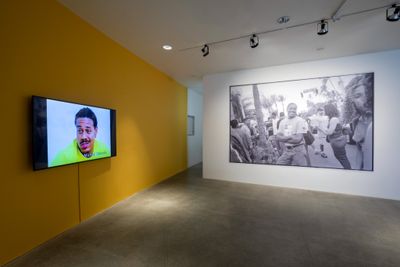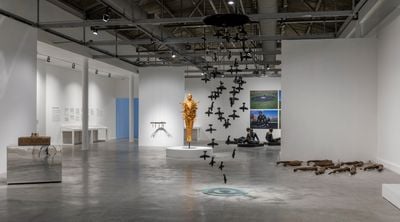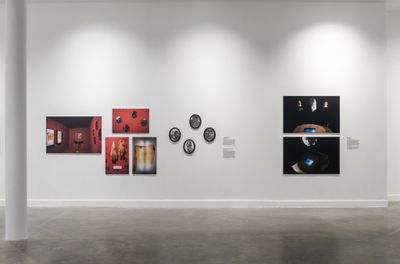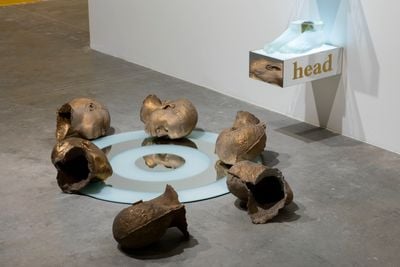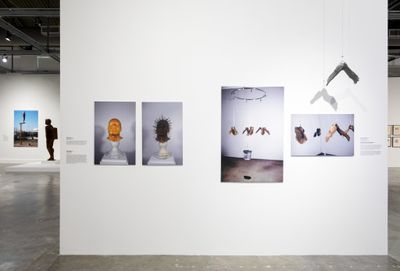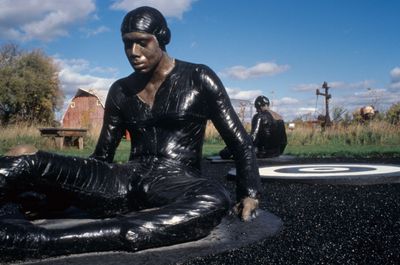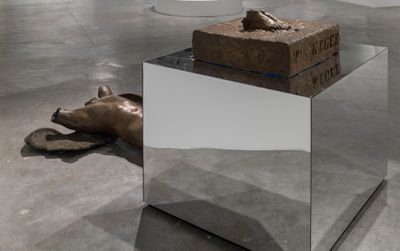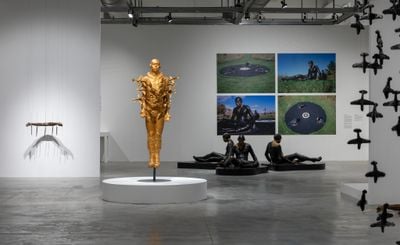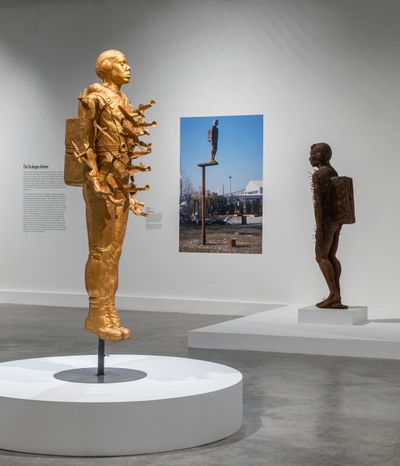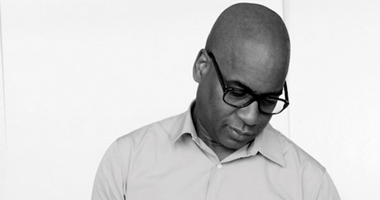Michael Richards' Prescient Sculpture Speaks to the Present
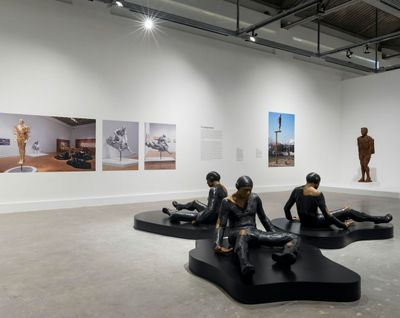
Exhibition view: Michael Richards, Are You Down?, Museum of Contemporary Art North Miami, Miami (21 April–10 October 2021). Courtesy Museum of Contemporary Art North Miami. Photo: Daniel Bock.
At the Museum of Contemporary Art North Miami, Michael Richards: Are You Down? (21 April–10 October 2021) reveals the immense technical and conceptual abilities of an artist who, during his short life, established himself with poignant works that confronted the realities of racial inequality and the complexities of the diaspora experience.
Born in Brooklyn in 1963, Richards was raised in Kingston, and is described in the exhibition text as having come of age between post-independence Jamaica and post-civil rights era America.
Curated by Alex Fialho and Melissa Levin, this is the artist's first museum retrospective, and it showcases almost every sculpture and drawing he created between 1990 and 2001, including four recently conserved works that have not been exhibited since the artist's passing.
Early in his practice, while enrolled on a Masters degree at New York University, Richards created site-specific installations that engaged with historical events of racial inequality, including the trans-Atlantic slave trade and minstrelsy.
No longer extant, these early works are presented in the exhibition's first section as enlarged photographic prints. Among them is documentation of Same Old Song and Dance (1992), an indictment on racism involving hanging tuxedo trousers and a theatrical red curtain installed in the window of Grey Art Gallery, facing NYC's Washington Square Park.
As the artist once noted, 'if you examine the past you can also read the symptoms of what is prevalent now in terms of racial associations and the relationships of power present in our society today'.
This examination would continue as Richards transitioned to sculpture, for which he is primarily known, creating what the curators describe as autonomous forms that address contemporary political events directly.
A Loss of Faith Brings Vertigo (1994), for instance, consists of four outer plinths with plaques reading, 'When I was young I wanted to be a policeman,' with white busts atop each printed with images of police officers in riot gear.
The plaque on a fifth central plinth reads 'A loss of faith brings vertigo,' with the face of Black author and activist Rodney King printed on the forehead of a bust mechanised to spin, like a third eye. In 1991, King was brutally beaten in Los Angeles by four police officers, and their subsequent acquittal sparked furious riots.
A Loss of Faith Brings Vertigo speaks to a dizzying contrast: between the idea that police are just defenders and the unjust reality that has been demonstrated by their actions time and again.
The busts were actually cast from Richards' own body so as to, in the artist's words, 'make this pain and alienation concrete'—that is, the psychic conflict resulting from the desire to both belong to and resist a society which denies Blackness even as it affirms it.
Works like these have prompted critics to describe Richards as 'prescient' when it comes to contemporary conversations on inequality.
'By focusing on issues of identity and identification, I attempt to examine the feelings of doubt and discomfort which face blacks who wish to succeed in a system which is structured to deny them access,' Richards wrote in a statement found in the Bronx Museum's archive.
Also cast from Richards' own body is the titular work Are You Down? (2000), which consists of three to-scale figures wearing tattered Tuskegee Airman uniforms that appear to have parachuted down from the sky only to sink into tar.
The Tuskegee Airmen were the first African American pilots in U.S. military history, flying more—and often more dangerous—missions than other squads during World War II, all while fighting for the rights they did not possess in their own country.
In this exhibition, another Tuskegee Airman features in The Great Black Airmen (Tuskegee) (1996): a grand plinth for a monument inscribed with 'Tuskegee', with only the feet remaining on the base, the body having been snapped off and lying on the floor.
As Melissa Levin told Karen Rosenberg for Artful, 'He refers to that work as a neglected monument, which feels so resonant with the conversation around toppling monuments today.'
Flight and spirituality were closely aligned in Richards' visual vocabulary, representing what the artist described as 'both freedom and surrender.'
In Tar Baby vs. St. Sebastian (1999), a flurry of miniature models of the aeroplanes that the Tuskegee Airmen flew pierce a golden, life-sized sculpture of Richards in an Airman's uniform.
Works like these have prompted critics to describe Richards as 'prescient' when it comes to contemporary conversations on inequality.
A reference to the arrows shot at the martyr St. Sebastian, speaking to the injustices the Airmen suffered and their physical sacrifice to prove themselves to be more than a derogatory slur, these stabbing planes also recall the nails hammered into the life-sized bronze figure of a Tuskegee Airman standing atop a 16-foot bar at the Socrates Sculpture Park in NYC.
Featured in the photograph [Untitled] Free F'All (1997), those nails reference to nkisi nkondi, 'power figures' of the Kongo used in ceremonies performed for society's benefit, including the seeking of justice from those who have done harm, or who have disturbed the community.
Tar Baby vs. St. Sebastian tragically foreshadowed Richards' death. On 11 September 2001, he was killed in the 9/11 attacks on the World Trade Center in New York. He had taken up residency at the World Views studio run by the Lower Manhattan Cultural Council, located on the 92nd floor of the north tower, where he had spent the night.
Had Richards not died, he would have certainly become a powerful voice in contemporary art. A rising star of his generation, he entered the Whitney Independent Study Program after his Masters, took up an artist's residency at the Studio Museum in Harlem, and in 1995 won the Art Matters' Individual Artist Grant.
Among other notable achievements, he participated in seminal exhibitions at important institutions alongside then-emerging names such as Glenn Ligon, Kerry James Marshall, Kara Walker, and Carrie Mae Weems.
Richards saw history as a lens on the present moment, and his conviction infused his works with a vivid sense of foresight that resonates sharply with the state of things today, even though he did not live to see it.
For Richards' cousin Dawn Dale, who has kept much of his work safe for the past 20 years, it is through his works that the artist lives on: 'He wanted to say something to the world, and he's still saying it. His work is saying it for him.' —[O]

